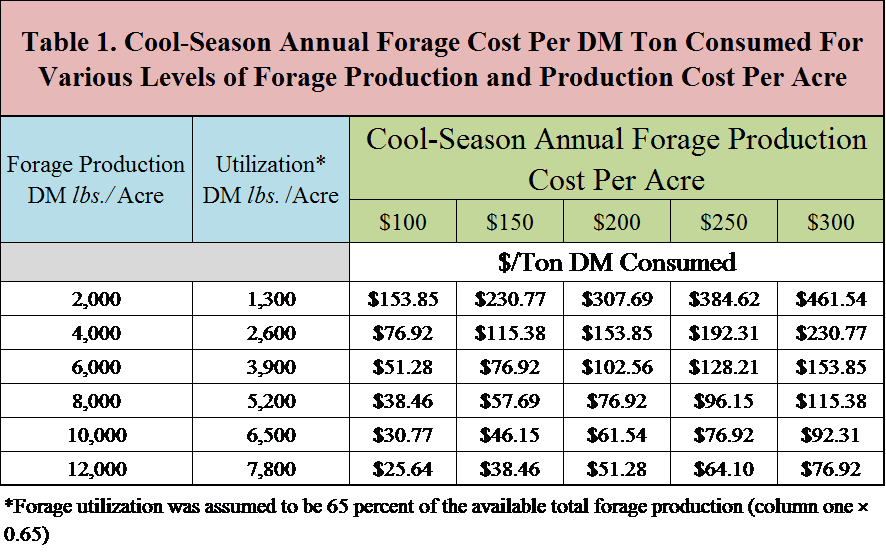The Economics of Grazing Cool-Season Annual Forages
Producers throughout the Southeast feed hay and other stored feedstuffs during the fall, winter, and early spring due to limited forage availability and lower forage quality. Feeding during this time period could last for 90 to 180 days based on management programs and weather conditions. Regardless of why and how long we choose to feed cattle, most cattle producers will agree this is a very costly activity and greatly reduces the profitability of the cowherd.
Feed costs are generally the greatest expense for most cattle producers. Thus, alternative winter feeding programs need to be continuously looked at to reduce the cost of winter feeding while meeting your herd’s nutritional needs. Cool-season annual forages are one of those alternatives that can provide producers with a cost-effective alternative to reduce their hay, supplement, and stored feed costs while potentially extending the grazing season by three or more months.
Cool-season annual forages can be an important part of annual forage production as they allow us to utilized dormant warm-season pastures. These acres that would normally be non-productive during the winter can become productive acres during the winter and early spring months. Although cool-season annual forages are costly to establish, ($100-$300/acre) depending on planting method and fertilization, their nutritive values are high in total digestible nutrients (TDN) and crude protein (CP). The high nutritive value of cool-season forages can provide cattle producer with a less costly substitute for supplementing their herd’s nutritional needs.
Livestock producers in the Southeast planting cool-season annual forages will have different levels of production per acre, different levels of forage utilization, and different production costs per acre. Table 1 provides the $/ton of dry matter consumed for various levels of production, utilization, and costs per acre. The cost per ton of dry matter consumed can range from $26 to $462 per ton consumed by cattle.

The first column in Table 1 describes the level of cool-season forage production per acre (DM lbs./Acre) and could range from 2,000 to 12,000 DM pounds per acre depending on soil productivity, planting date, management, and weather. Utilization or consumption of forage, as shown in the second column is very important because regardless of the feedstuff used, (cool-season annuals, hay, stockpiled forage, or commodities) the $/ton should be evaluated on the amount consumed or utilized, not the amount produced. In Table 1, increasing the pounds of forage production per acre, along with controlling your production costs per acre will provide producers with the cheapest $/ton of dry matter forage consumed.
Cattle producers can use the information in Table 1 to compare with the total cost of alternative feedstuffs. When making this comparison you must be sure to include all the costs associated with other feedstuffs which would include: the cost to purchase or raise, transport, store, feed, and the percent of waste. You will likely be surprised by how much supplemental feeds really cost us per ton consumed by the cow. Most of the scenarios in Table 1 above with a cost per ton of dry matter consumed of less than $150 will be cheaper than almost any comparable feedstuff. You may want to put a pencil to it and take a look at comparing feedstuffs in this manner.
Obviously, the economics of cool-season annual forages depends on your individual situation. Remember that all the costs have to be considered whether you are feeding harvested supplemented feeds or producing and grazing cool-season forages. Cool-season annual forages are a viable economic option for producers who can control their costs while getting adequate production (yield) and utilization (consumption). Simple cowboy economics tells us that it’s cheaper to let the cows harvest the forage. Good luck with your winter grazing and feeding program.
